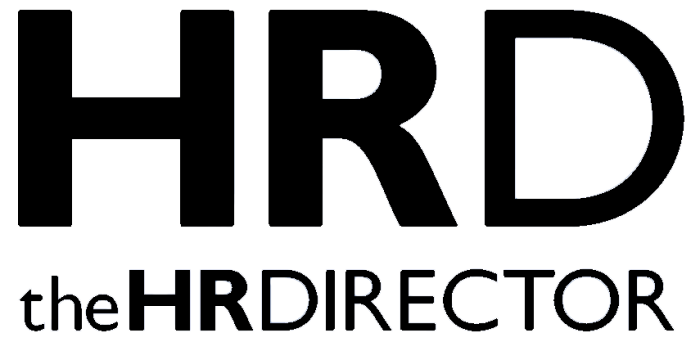Incredible opportunity lies in the hands of those who recognize that talent has no expiration date. Here’s why leadership, at its core, is strengthened by a wealth of perspectives and experience.
As life expectancy increases and career trajectories extend beyond traditional retirement ages, experienced professionals are playing an increasingly vital role in modern organizations. There’s a growing trend of re-hiring seasoned talent that highlights the need for a pragmatic, multi-generational approach to workforce management. Mixed-age teams, where fresh ideas blend with decades of knowledge, are proving to be a cornerstone of innovation and business success.
Statistically, this shift is undeniable. According to research* by the end of this decade, 150 million jobs worldwide will be occupied by professionals aged 55 and older. The U.S. workforce is projected to see one in four employees falling into this age category. Countries such as Japan, Italy, and Germany are experiencing similar trends, with more experienced professionals making up a growing proportion of their labor force.
Stephen Lennard, Managing Partner at Signium Australia, comments: “Mature workers have typically had to endure the negative connotations of being stereotyped as ‘boomers’. They’re often perceived as technologically incapable and possessing archaic, irrelevant traditional values. But in reality, having a mix of generations that include mature people presents an opportunity for businesses. So, how can organizations attract experienced professionals and also enable them to thrive?”
Understanding the shift in workforce dynamics
Many younger executives stayed at home throughout the COVID-19 pandemic, which means they missed valuable opportunities to glean the wisdom one gains from working alongside more mature leaders. These younger workers are still catching up on lost mentorship and learning curves.
Meanwhile, mandatory retirement ages are rapidly becoming obsolete, so older generations are still present in the workplace. In fact, a Resume Builder survey recently uncovered that labor shortages are driving demand for retirees to return to work. Many who don’t return to employment start their own businesses and consult within the industry they retired from.
“The fact is that older generations still have a lot to offer,” says Lennard. “Mature workers have a higher work ethic than other generations and are more reliable contributors at the workplace. With advances in healthcare extending both lifespan and career longevity, these seasoned professionals are able to remain highly productive and motivated beyond traditional benchmarks. Baby boomers don’t retire. They just reinvent themselves.”
Another factor that has changed the employment landscape is the availability of technological advancements. Digital tools and flexible work arrangements are opening doors for mature professionals to continue contributing meaningfully, within parameters that are more comfortable than ever before.
Forward-thinking organizations recognize that age is not a limitation but a valuable asset. Those that embrace age diversity enjoy benefits such as improved employee retention, stronger workplace culture, and enhanced financial performance. Beyond career longevity, the workforce benefits from the contributions of experienced professionals in several key ways:
● Enhanced decision-making
Mixed-age teams bring a balance of historical insight and fresh perspectives, leading to better problem-solving capabilities.
● Stronger leadership & mentorship
Senior professionals serve as excellent mentors, transferring industry and company knowledge* and skills to younger employees.
● Higher employee retention
Organizations that leverage the strengths of a multi-generational workforce see greater loyalty and lower turnover rates.
● Customer relations & service excellence
Experienced employees often bring stronger interpersonal skills and a deeper understanding of client needs.
● Financial & operational stability
Businesses that integrate professionals across all career stages tend to experience increased profitability and efficiency.
Organizations like Advocacy Against Age Discrimination (AARP) are a leading force in advancing workplace age diversity, advocating for policies and programs that enable mature professionals to remain active contributors to the workforce. Through its Employer Pledge Program (EPP), AARP has encouraged over 1,000 organizations to commit to recruiting across all age groups and fostering an inclusive environment. This initiative actively promotes hiring practices that eliminate age bias and ensure equitable opportunities for more experienced professionals. Some of the major global companies that have signed the pledge include Humana, Microsoft, Google, CVS Health, and Marriott International.
Beyond advocacy, AARP takes concrete action through programs such as Experience Corps, which places professionals aged 50 and older in mentorship and tutoring roles, reinforcing their value in society while also strengthening intergenerational collaboration. The organization also champions policies against age discrimination, having played a pivotal role in shaping legislation such as the Age Discrimination in Employment Act. More recently, AARP has supported the Protecting Older Workers Against Discrimination Act (POWADA) to reinforce workplace protections and prevent age-related biases in hiring and promotion processes.
Lennard comments, “Certain discriminations, like race and gender, are ‘louder’ than others, which means they’re spotted quickly and addressed with urgency. For some reason, ageism is quieter, harder to identify, and tends to be tolerated more. That’s why we need advocates in this area. Organizations like AARP play an important role in making noise about a problem that affects such a massive percentage of the working population.”
What are the top three ways to facilitate age inclusivity for more mature leaders?
To foster a thriving, age-diverse workforce, organizations can begin by focusing on four key areas:
1. Attracting and developing experienced leaders
In the words of Doug McMillon, CEO of Walmart, “Diversity is not just about race or gender; it’s about bringing in people from different backgrounds and experiences. Older workers bring invaluable wisdom and perspective.”
Organizations looking to build a truly diverse and high-performing leadership pipeline must actively seek out experienced professionals. This requires a strategic shift in recruitment and development efforts:
- Redesigning job descriptions to emphasize leadership, strategic vision, and industry expertise rather than focusing on technical skills that may evolve quickly.
- Partnering with networks and organizations that support career longevity, such as executive mentoring groups or leadership councils, to attract senior talent.
- Enhancing executive branding by showcasing seasoned leaders’ contributions, highlighting diverse leadership teams, and reinforcing a culture that values long-term expertise.
- Implementing leadership transition pathways that provide experienced professionals with opportunities to step into advisory roles, consultative positions, or board memberships.
- Providing return-to-work pathways for professionals who have taken career breaks, ensuring they have the resources to reintegrate effectively.
2. Retaining and supporting seasoned leaders
Building an inclusive workplace culture fosters long-term retention. Organizations that value and actively support experienced professionals create a more engaged and high-performing workforce. Key strategies include:
- Implementing flexible leadership roles – Offering options such as fractional executive positions, project-based leadership opportunities, and advisory roles allows seasoned professionals to continue contributing while maintaining a balanced work-life approach.
- Encouraging collaboration across generations – Establishing structured cross-generational mentorship programs, leadership coaching initiatives, and succession planning strategies ensures knowledge transfer and fosters innovation.
- Recognizing and rewarding contributions – Organizations should adopt leadership assessment models that highlight strategic impact, mentorship, and legacy contributions rather than focusing purely on short-term performance metrics. Public recognition programs and board opportunities can further reinforce the value of mature leaders, and help to mitigate age bias within teams.
3. Enabling growth and thought leadership
To maintain a dynamic and resilient leadership team comprising numerous generations, organizations should ensure that experienced professionals continue to grow and contribute at the highest levels. This could include:
- Investing in executive education – Offering specialized leadership development programs tailored to more mature executives, focusing on emerging trends, digital transformation, and adaptive leadership.
- Expanding wellness and longevity programs – Incorporating executive-level health initiatives, financial planning support, and career sustainability resources ensures that experienced professionals remain at peak performance.
- Encouraging thought leadership and public engagement – Providing platforms for experienced leaders to contribute to industry panels, publish insights, and mentor emerging executives reinforces their role as invaluable assets to the organization.
www.signium.com
*transferring industry and company knowledge









